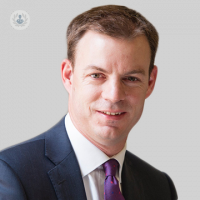Knee pain: causes, symptoms, and treatment of anterior knee pain syndrome
Written in association with:Pain at the front of the knee is a typical problem which accounts for 25 - 40% of all knee-related issues seen in a sports knee clinic. It is debilitating and is often poorly treated, largely because it is poorly understood. Anterior knee pain syndrome (AKPS) describes a condition with many subtypes though the underlying problem is normally an imbalance of the muscular control of the kneecap. AKPS usually affects adolescents, but it also commonly occurs in middle age.

What causes AKPS and what are the symptoms?
There are many contributing factors to the development of AKPS, including overall limb alignment, and local knee and pelvic factors and is likely that a combination of structural abnormalities and poor biomechanics will be the cause.
Most sufferers are active individuals who complain of knee pain during activities such as climbing stairs and running and/or a stiffness and pain after a period of immobilisation in a flexed position, such as at the cinema or after a car journey. If they stand up quickly it feels stiff but quickly feels looser with movement. Another symptom is the ‘noisy knee’, which clicks or creeks, sometimes coupled with a feeling of instability.
If you are experiencing any of these symptoms, make an appointment with our orthopaedic surgeons for advice on the best treatment for you.
Treating AKPS through rehabilitation
Treatment is almost exclusively rehabilitation based, and patients rarely need a surgery. It must begin with a clear explanation about what is causing the pain. The patient’s understanding is essential to ensure compliance with what is often a lengthy and frustrating process.
While the joint can’t be altered, the control of it can. The rehabilitation needs to be overseen by a sports physiotherapist though the patient does the exercises outside of the clinic. Exercises are often ‘open and close’ kinetic exercises, the use of foot orthoses (shoe inserts), patellar taping, stretching and deep friction massages.
These interventions can take up to three months before noticeable improvements of the knee pain are made, so patience and persistence are key, this is why the initial explanation to the patient is so crucial. Unfortunately 40% of patients relapse after a year, often due to neglect of the knee when returning to sport. In these cases, as pain is the outcome of these cases, they need to be evaluated in consideration of other physical, psychological and lifestyle issues.
A small number of patients with knee problems will need further investigation with imaging (such as an MRI) and possible radiological or surgical intervention.


